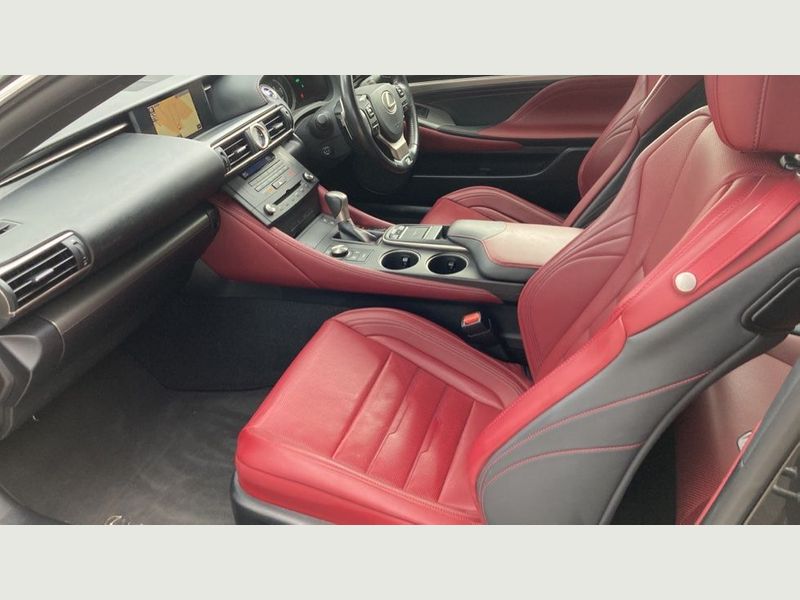
As a car enthusiast, it’s not uncommon to spend years considering different models before finally making a decision. In my case, I had been contemplating the RC-F for quite some time, but eventually realized that I couldn’t justify the purchase. Instead, I set my sights on either the 300h or the 200t, depending on the right specifications. And as fate would have it, the perfect RC200t came along at a very reasonable price.
A Gear Conundrum
One of the first things I noticed about the RC200t was that it never seemed to be in the right gear. Unlike the IS250, where the pedal’s action directly correlated to the car’s acceleration, the 200t’s engine and gearbox combination felt off. The gearbox had short ratios and high gear overlap, while the engine had a narrow power band. This resulted in a lack of synchronization between my actions and the car’s response. Even using the shifters didn’t alleviate the problem, as downshifting multiple gears was often necessary. In fact, the car would shift into 6th gear at just 30MPH! Lexus’ intention behind this setup was to achieve favorable Co2 figures in artificial tests, but it didn’t translate well to real-life driving.
Dynamics and Torque
There have been arguments regarding the overall dynamics of the RC200t, with some claiming that it would leave the IS250 in the dust. However, I would argue the opposite. In the IS250, torque is readily available at any speed, ensuring consistent performance. With the 200t, it’s a different story. Pressing the pedal becomes a guessing game of when the power will kick in. While the 200t may win in a straight line from 0-60, the crossover point with the IS250 is around 40-50MPH. The only real advantage of the 200t lies in acceleration between approximately 40/50 and 90/110MPH, which is only practical when joining the motorway from a slip road.
Fuel Economy Woes
One aspect of the RC200t that caught me off guard was its surprisingly poor fuel economy. This shouldn’t have come as a surprise, considering the turbocharged engine’s power output compared to the IS250. I’ve been driving gingerly, trying to conserve fuel, but I’m still getting around 19MPG on my commute to work. The average fuel consumption for my first tank was 19.2MPG, and the second tank improved slightly to 23.5MPG. Towards the end of owning my IS250, I was getting between 24-26MPG, which I deemed as poor at the time. While some may suggest that I should have opted for the 300h if fuel economy was a concern, I wasn’t impressed with its economy either. Additionally, the 200t’s fuel economy is comparable to much faster cars, making it hard to justify.
Unrefined Acceleration and Chassis
The “on/off” nature of the 200t’s acceleration contributes to its unrefined driving experience. In situations where a slight input on the pedal sufficed with the IS250, the 200t demands a more substantial push to activate the power, resulting in unintended bursts of acceleration. Furthermore, the chassis of the RC200t feels like a hybrid between the IS-C and GS models, giving it a larger and more luxurious presence. While this may be a positive aspect for some, I personally prefer a more agile and sporty feel, akin to the IS.
Infotainment and Driving Experience
The RC200t features a touchpad-based infotainment system, which I surprisingly don’t mind. However, the overall system and the LF-A style cluster display lack coherence. There’s plenty of unused space on the displays that could have been utilized to offer more valuable information. In terms of sound, the engine of the RC200t doesn’t compare favorably to the V6 engine of the IS250. However, this isn’t a significant issue for me personally, as I often listen to music at a volume that drowns out engine noise. Nonetheless, when pushed, the 200t’s engine feels noticeably rougher and fails to deliver the same level of satisfaction as the IS250.
The Upside and Look of the RC200t
Despite its shortcomings, there are positive aspects to the RC200t. One thing that stands out is its exceptional looks. It exudes an amazing aesthetic and is a rare car to spot on the road. In terms of age, it’s a decade newer than my old IS, giving it a more modern feel. While I may not enjoy the way it drives, there’s no denying that the RC200t feels significantly more advanced than the MK2 IS, which now seems a bit outdated. Moreover, considering the low price at which I acquired it, I believe I can sell it with minimal loss, if any, in about three years’ time, or perhaps even trade it for a BMW i8 or LC.
FAQs
Q: Is the RC200t suitable for fuel-conscious drivers?
A: Unfortunately, the RC200t’s fuel economy is not its strong suit. While efforts to drive more economically may yield slightly better results, it falls short in comparison to other options, including the 300h.
Q: How does the RC200t compare to the IS250 in terms of dynamics?
A: While some claim that the RC200t would leave the IS250 in the dust, the reality is quite different. The IS250 offers instant torque at any speed, ensuring a consistent driving experience. The 200t, on the other hand, can be unpredictable and lacks the same level of immediate responsiveness.
Q: Is the RC200t worth considering despite its flaws?
A: The RC200t’s attractive appearance and modern feel may still make it a desirable option for some. However, it’s essential to weigh the pros and cons and consider individual preferences before making a decision.
Conclusion
The RC200t may not be the perfect car, but it certainly has its appeal. Its stunning looks, modernity, and potential for resale value make it an intriguing option. However, potential buyers must be prepared for its quirks, including the erratic acceleration and lackluster fuel economy. Ultimately, it’s a matter of personal preference and priorities when deciding whether the RC200t is the right choice.